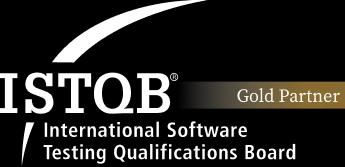
What is an Embedded System? Applications of Embedded Systems
In today's rapidly evolving world, Embedded Systems have emerged as a cutting-edge technology, forming the backbone of the burgeoning smart device industry. These systems are widely applied across various domains, such as consumer electronics, medical devices, telecommunications, and more, offering significant advancements in performance, utility, and energy efficiency.
So, what exactly is an Embedded System? What are its applications and development trends in contemporary times? Let's explore these concepts in detail with Tokyo Tech Lab through the following discussion.
I. What is an Embedded System?
An Embedded System is a term used to describe a system that can operate independently and is integrated into a larger device or system to control or manage specific functions. Unlike general-purpose computing systems, embedded systems are designed to perform specialized tasks across various fields such as industry, automation, control, monitoring and communication.

A key feature of embedded systems is their ability to operate stably with high automation. They typically lack a user interface and are designed to execute specific tasks tailored to their particular application. This trait allows embedded systems to deliver high efficiency and reliability, meeting stringent requirements across multiple domains.
II. Characteristics of embedded systems
Integration and independent operation: Embedded systems are crafted to function autonomously within their environment without requiring frequent user intervention. They are capable of processing data and responding automatically and swiftly.
Optimization for specific tasks: The hardware and software components of embedded systems are engineered to carry out particular functions. This allows them to meet the demanding needs of their tasks efficiently and cost-effectively.
For example, the abs brake control system in cars is optimized to manage braking force quickly and accurately.
Minimal need for complex user interfaces: Most embedded systems do not need complex user interfaces. They typically operate in the background, performing their duties without direct user interaction.
High stability and reliability: Embedded systems are designed to function reliably and continuously in environments that require high dependability, such as in medical or aerospace applications. Their ability to withstand harsh conditions and maintain consistent performance is a crucial factor in their design.
III. Advantages and challenges of embedded systems
Embedded systems, with their specialized design and integration of hardware and software, offer many benefits but also face several challenges. Below are the main advantages and challenges of embedded systems:
1. Advantages
High performance: Embedded systems are tailored for specific applications, optimizing performance and specialized functionalities. For example, an embedded system in a car's engine control unit is designed to manage engine operations efficiently to maximize performance and response time, unlike a general-purpose computer which must handle diverse tasks.
Cost-effective: Due to their specialized design and compact size, embedded systems often have lower production and operational costs. This makes them an economical choice across a wide range of applications, from household appliances to industrial machinery.
Compact Size: Embedded systems are designed to be small and easily integrated into other products, making devices more compact, convenient, and aesthetically pleasing.
2. Challenges
Power consumption: Many embedded systems run on batteries or limited power sources, so optimizing energy consumption is crucial. Designers must balance performance and power usage to ensure longevity and stable operation.
Reliability and safety: Embedded systems often perform critical functions in safety, health, and security applications. Failures or malfunctions can have severe consequences, so these systems must be designed, tested, and maintained to high standards of reliability and safety.
Development and maintenance complexity: The specialized nature and tight integration of hardware and software in embedded systems make development, upgrades, repairs, and maintenance complex. Developers need in-depth knowledge of both hardware and software to effectively address these issues.
IV. Applications of Embedded Systems
Embedded systems are widely used in various aspects of daily life, demonstrating their versatility and importance:

1. Consumer electronics
Smart appliances: Embedded systems in devices like washing machines, microwaves, and refrigerators provide automation and efficiency enhancements, making household chores easier and more efficient.
Smartphones and wireless devices: They enable functions such as motion sensors, energy management, and wireless connectivity, enhancing the usability and functionality of modern gadgets.
2. Automotive
Anti-lock braking systems (ABS): Embedded systems in ABS process signals from wheel speed sensors and adjust brake pressure in real-time, ensuring safe and effective braking.
Infotainment systems: These systems manage audio, video, and connectivity features like Bluetooth and GPS, providing a smooth and engaging user experience.
Autonomous vehicles: Embedded systems use sensors and processors to gather data and make automatic driving decisions, ensuring safe and efficient self-driving capabilities.
3. Healthcare
Health monitoring devices: Embedded systems in devices like heart rate monitors and glucose trackers continuously and accurately monitor health indicators, alerting users and doctors to any abnormalities.
Diagnostic imaging systems: They are integral to X-ray, MRI, and CT scan machines, processing and displaying detailed medical images to aid in diagnosis and treatment.
4. Telecommunications
Networking equipment: Routers and switches use embedded systems to manage data traffic and maintain stable network connections, optimizing network performance and data security.
Mobile devices: They handle mobile connectivity and communication data efficiently, managing calls, messages, and internet access while optimizing bandwidth usage and energy consumption.
5. Industrial Automation
Industrial robots: Embedded systems control the movement and operations of robots in manufacturing processes, ensuring high precision and performance in tasks like assembly, welding, and quality inspection.
Process control systems: These systems monitor and control complex industrial processes, from chemical production to energy management, automating and optimizing operations to increase efficiency and reduce costs.
V. Development trends of Embedded Systems
With the continuous advancement of modern technology, embedded systems are becoming central to many new technological trends. Below are the main trends where embedded systems are being robustly applied:

1. Internet of Things (IoT)
The explosion of connected devices has created a network of smart objects, from household appliances to complex industrial systems. Embedded systems play a foundational role in IoT by:
-
Connecting and communicating: Embedded systems help devices like air conditioners, smart lights, and environmental sensors connect and exchange information efficiently. They enable these devices to operate more autonomously and intelligently, such as adjusting temperatures based on usage patterns or optimizing energy consumption.
-
Remote management and control: Thanks to embedded systems, users can remotely control IoT devices through smartphones or other devices. For example, smart home systems can automatically adjust lighting, lock doors, and monitor security.
2. Artificial intelligence (AI)
Integrating AI into embedded systems is unlocking new capabilities in processing and decision-making:
-
Intelligent data analysis: Embedded systems use AI to analyze complex data from sensors and cameras, allowing them to recognize faces, detect motion, and provide immediate responses. For instance, security surveillance systems can detect and alert suspicious activities.
-
Automation and machine learning: AI helps embedded systems learn and improve performance over time. In applications like self-driving cars, embedded systems with AI can learn from traffic and environmental data to drive more safely and efficiently.
3. Cybersecurity
With increased connectivity, security becomes a significant challenge for embedded systems. To ensure safety, advanced security measures are integrated into embedded systems, including:
-
Data encryption: Embedded systems use encryption techniques to protect data transmitted between IoT devices, preventing unauthorized access and ensuring data integrity.
-
Multi-factor authentication: To enhance security, embedded systems often require multi-factor authentication, ensuring that only authorized users can access and control the devices.
-
Intrusion detection and prevention: Embedded systems are equipped with tools to detect cyberattacks and automatically take preventive measures to protect the devices and data.
These trends not only drive the development of embedded system technology but also open new opportunities in various fields, from industry and healthcare to smart homes. Embedded systems are becoming increasingly indispensable in daily life and work, making them one of the most advanced technologies of our time.
VI. Conclusion
Embedded systems play a crucial role in many areas of modern life today. With their high efficiency and low cost, embedded systems will continue to develop and open up many new opportunities in the era of modern digital technology. The above are all the insights about embedded systems that Tokyo Tech Lab shares with you. We hope this article can assist you in your work. Don't forget to follow us for more useful knowledge!
SHARE THIS ARTICLE
Author
Huyen TrangSEO & Marketing at Tokyo Tech Lab
Hello! I'm Huyen Trang, a marketing expert in the IT field with over 5 years of experience. Through my professional knowledge and hands-on experience, I always strive to provide our readers with valuable information about the IT industry.
More Posts



About Tokyo Tech Lab
Services and Solutions
Contact us
© 2023 Tokyo Tech Lab. All Rights Reserved.







